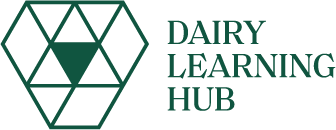Aarhus University, CopenhagenJune 13th -16th 2022
The Dairy Science and Technology Symposium 2022 consists of two different events:
- An online symposium from Jun 13th to Jun 16th, starting 15:00 CET, targeted equally at students of dairy science that are interested in the latest topics and dairy professionals from academia and industry.
- A summer school from Jun 14th to Jun 17th, starting 9:00 CET, for early career researchers, who want to strengthen their knowledge in dairy science and enhance their transferable skills.
Key Sessions & Activities

Monday 13th June 2022 THE ROLE OF MILK AND DAIRY PRODUCTS IN HEALTHY AND SUSTAINABLE DIETS Sustainable Healthy Diets are dietary patterns that promote all dimensions of individuals’ health and wellbeing, have low environmental pressure and impact are accessible, affordable, safe and equitable and are culturally acceptable. Unfortunately, in the public debate, this is often reduced solely environmental impact on product level, thus ignoring the dietary level, as well as economic and social factors. Holistic approach on sustainable and healthy diets, particularly when include circular rather than linear food systems, clearly highlight importance of milk and dairy products in a sustainable and healthy diet. Key aspects in this are the nutrient density, the high digestibility and bioavailability, but also the affordability and social acceptance, combined with an ever-decreasing footprint. The role of milk and dairy products in a sustainable and healthy diet should, as such, be the foundation of a demand driven dairy chain. |
Linking environmental impact and nutrition in nutritional LCAs: opportunities and challenges Elinor Hallström, RISE, Sweden |
The role of dairy in combatting malnutrition Katie Ayling , Wageningen University & Research, The Netherlands |
A world without cows Mitch Kanter, Global Dairy Platform, USA |
PANEL DISCUSSION -Mitch Kanter, Katie Ayling, Elinor Hallström and Thom Huppertz |
Early Career Researcher Presentations
Effect of incubation temperature and Acetobacter orientalis level on in-situ production of lactobionic acid in yoghurt Shamim Hossain, Yogesh Khetra, Chandni Dularia, Ganga Sahay Meena1
Livestock in circular food systems Renée Cardinaals1
Influence of Dairy Products on Bioavailability of Zinc from Other Food Products: A Review of Complementarity at a Meal Level Blerina Shkembi1, and Thom Huppertz1,2
Quantitative proteomic profiling of bovine colostrum and milk at onset of lactation Hannah K. Masterson1,2,3, Tom F. O’ Callaghan4, Michael O’Donovan5, John Paul Murphy5, Katie Sugrue5, Rebecca A. Owens2,3, Rita M. Hickey1,2
|
Tuesday 14th June 2022 DELIVERING NUTRITION WITH DAIRY Nutritional sciences have taken some steps in the last decade changing focus from reductionistic component-based approaches to more holistic product-based approaches, wherein the (potential) interaction between constituents and a product and the influence of the structure of the food products is also considered. This has been key in e.g., the saturated fat discussion, where is has been clearly shown that findings from studies on saturated fatty acids in isolation cannot be translated to effects observed in a dairy matrix like cheese, but also for e.g., chocolate or red meat. However, also for other concepts this applies. Consider e.g., the (lack of) cariogenicity of milk and dairy products, due to lactose as a low-cariogenic carbohydrate source combined with the protective effects of the caseins and milk salts.
|
Digestion of milk fat: Physicochemical, structural and nutritional aspects Sophie Gallier, Dairy Goat Co-Operative Ltd., New Zealand |
Delivering carbohydrates for exercise with dairy Gareth Wallis, University of Birmingham, United Kingdom |
Ultraprocessed foods: From ideology to nuance Thom Huppertz , FrieslandCampina / Wageningen University & Research, The Netherlands |
PANEL DISCUSSION -Thom Huppertz, Gareth Wallis, Sophie Gallier and Ulf Andersen, |
Early Career Researcher Presentations Bleu d’Auvergne, a blue-veined cheese with a complex matrix and interesting nutritional properties Imène Ferroukhi1, Cécile Bord1, Sylvie Alvarez2, Karine Fayolle1, Sebastien Theil1, René Lavigne1, Christophe Chassard1, Julie Mardon1
Identifying glycation hot-spots in bovine milk proteins during production and storage of skim milk powder Inge Gazi1,2, Vojtech Franc1,2, Sem Tamara1,2, Martine P. van Gool3, Thom Huppertz3,4, Albert J. R. Heck1,2
Valorization of Greek yoghurt acid whey with a Thermothielavioides terrestris novel β-galactosidase for GOS synthesis Athanasios Limnaios1, Nausika Korialou1, Anastasia Zerva2, Maria Tsevdou1, Evangelos Topakas2, Petros Taoukis1
Ultra- und nanofiltration applied to reduce the lactose Peter Habermehl, Stefan Nöbel, Jan Fritsche1
Fermentation of acid whey by propionic acid bacteria Carsten Nachtigall, Ramona Plebst, Georg Surber, Harald Rohm, Doris Jaros1 1 Chair of Food Engineering, Institute of Natural Materials Technology, Technische Universität Dresden, Germany
|
Wednesday 15th June 2022 PROCESSING OF MILK AND DAIRY PRODUCTS: FOR SAFE, STABLE AND NUTRITIOUS PRODUCTS Within the dairy chain, processing of milk plays an extremely important role. First and foremost, it is required to improve the safety and extent the shelf-life of products, thereby ensuring that products can be safely distributed all over the world. This shelf-life extension can be achieved through heat treatment, but also through fermentation or drying. In addition, processing is also important to ensure that a dairy matrix is created which is preferable by consumers, which can be digested and from which nutrients bioavailable. Such processing can include similar steps as for shelf-life extension, but also other processing techniques, including e.g., non-thermal processing.
|
Emerging technologies for production of dairy products Lilia Ahrné, University of Copenhagen, Denmark |
Digital transformation for research and development Carsten Ersch, FrieslandCampina, The Netherlands |
Novel drying technologies for drying ingredients Eoin Murphy, Moorepark Food Research Centre, Teagasc, Ireland |
PANEL DISCUSSION – Eoin Murphy, Lilia Ahrné, Carsten Ersch and Alan Kelly |
Early Career Researcher Presentations Mapping out partial coalescence to optimize aerated dairy emulsions Abigail Thiel1
The impact of wild strains as starter cultures on goat milk cheese production Angeliki Kourkoulakou, Anna Tasiouli, Theodoros Paschos, Effie Tsakalidou, Maria Kazou1
Photopurification of whey-brine used in cheesemaking by turbulent flow UV-C treatment Ioanna Neokleous, Justyna Tarapata, Photis Papademas1
Solubilization of individual caseins and minerals from rennet casein by disodium phosphate and trisodium citrate: influence of concentration, pH and temperature Gaurav Kr Deshwal1,2, Laura G. Gomez-Mascaraque1, Bernard Martin Corrigan1, Mark Fenelon1, Thom Huppertz2,3
Storage stability of lactose-free UHT milk in relation to processing strategy and lactase preparation Lotte Juul Knudsen1,2, Søren Drud-Heydary Nielsen1,2, Ekaterina Churakova3, Valentin Rauh4, Daniel Otzen2,5, Lotte Bach Larsen1,2
|
Thursday 16th June 2022 DESIGNED TO DELIVER Key in the ability of milk and dairy products to function as excellent food matrices is the fact that milk, in essence, is designed to deliver. It is the sole source of nutrition for the neonate and contains essential structural elements, e.g., in the form of casein micelles and milk fat globules, which deliver a multitude of nutrients, including salts, vitamins and proteins. In addition, colloidal stability of these structure elements in the GI tract also leads to important control of the kinetics of digestion and release of nutrients, enabling maximum utilization of nutrients from milk and dairy products. Hence, understanding of these key structure elements and their biological function, and their interaction with (micro-)nutrients is key to creating products that fit in a healthy and sustainable diet.
|
The sound of structure – understanding dairy structure formation Ulf Andersen, Arla Foods amba, Denmark |
Bovine milk protein modification to create human milk behavior Peng Zhou, Jiangnan University, China |
Chew on it: How oral processing behaviors impact food sensory perception and intake Markus Stieger, Wageningen University & Research, The Netherlands |
PANEL DISCUSSION -Effie Tsakalidou, Ulf Andersen, Markus Stieger and Peng Zhou |
Early Career Researcher Presentations A Study on the Structural Conformation of Enzymatic Cross-linked Caseins Particles in Acidic Conditions Angella Velazquez1,3, Marie Hennetier2, Paulo Peixoto1, Guillaume Delaplace1, Manon Hiolle3
Effect of whey proteins on micellar casein dissociation upon pH change and cool storage Thea Lykkegaard Møller1, Søren Bang Nielsen2, Milena Corredig1
Screening of proteolytic activity and heat resistance of Pseudomonas strains Miguel Aguilera Toro1, Amalie Vestergård Thomasen1, Yinghua Xiao2, Valentin Rauh2, Vittoria Piccini2, Lisbeth Truelstrup Hansen3, Martin Laage Kragh3, Lars Wiking1, Nina Aagaard Poulsen1, Lotte Bach Larsen1
The effect of Plasmin activity on Camel milk Santhoshani Thiyaga Saumya Kumarihami Warakaulle, Afaf Kamal-Eldin1
Effect of alternative nonthermal technologies on the production of acid gels prepared with sweet whey Maria Tsevdou, Thaleia Vintzilaiou, George Dimopoulos, Athanasios Limnaios, Petros Taoukis1
|
